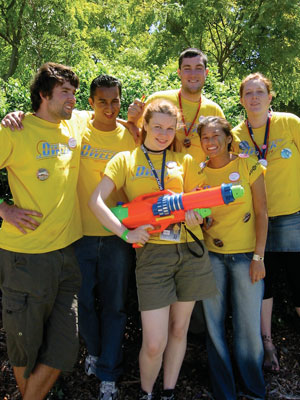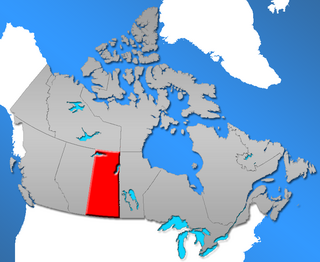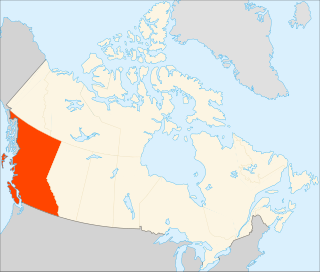
Occupational therapy (OT) is a healthcare profession that involves the use of assessment, intervention, consultation, and coaching to develop, recover, or maintain meaningful occupations of individuals, groups, or communities. The field of OT consists of health care practitioners trained and educated to support mental health and physical performance. Occupational therapists specialize in teaching, educating, and supporting participation in activities that occupy an individual's time. It is an independent health profession sometimes categorized as an allied health profession and consists of occupational therapists (OTs) and occupational therapy assistants (OTAs). OTs and OTAs have different roles, with OTs licensed to complete comprehensive occupational therapy evaluations. Both professionals work with people who want to improve their ability to participate in meaningful occupations.

Student affairs, student support, or student services is the department or division of services and support for student success at institutions of higher education to enhance student growth and development. People who work in this field are known as student affairs educators, student affairs practitioners, or student affairs professionals. These student affairs practitioners work to provide services and support for students and drive student learning outside of the classroom at institutions of higher education.

The University of the Fraser Valley (UFV), formerly known as University College of the Fraser Valley and Fraser Valley College, is a public university with campuses in Abbotsford, Chilliwack, Mission and Hope, British Columbia, Canada. Founded in 1974 as Fraser Valley College, it was a response to the need for expanded vocational training in the communities of the Fraser Valley. In 1991, it became a university college, with degree-granting status. As the University College of the Fraser Valley, it grew rapidly, becoming one of the largest university colleges in Canada.

Health education is a profession of educating people about health. Areas within this profession encompass environmental health, physical health, social health, emotional health, intellectual health, and spiritual health, as well as sexual and reproductive health education. It can also be defined as any combination of learning activities that aim to assist individuals and communities improve their health by expanding knowledge or altering attitudes.
Health promotion is, as stated in the 1986 World Health Organization (WHO) Ottawa Charter for Health Promotion, the "process of enabling people to increase control over, and to improve their health."

Okanagan College is a public post-secondary institution with multiple campuses spread across the southern interior of British Columbia, Canada. The College was established in 1963 and grown to become one of the largest colleges in British Columbia outside the Lower Mainland and Victoria. It has roughly 5,000 full-time students per semester across four regional campuses. 1,885 international students from over 40 countries studied at Okanagan College in 2022-23, comprising 11% of its total student headcount. The College once had one of the fastest growing populations of Indigenous students of any college in the province; in the 2015-16 academic year Okanagan College delivered educational programming to 1,680 Indigenous students. However, the growth did not continue, in 2021-22 the Indigenous student headcount remained at 1,690.

Student orientation or new student orientation is a period before the start of an academic year at a university or tertiary institutions. A variety of events are held to orient and welcome new students during this period. The name of the event differs across institutions. Post-secondary institutions offer a variety of programs to help orient first year students. These programs can range from voluntary community building activities to mandatory credit-based courses designed to support students academically, socially, and emotionally. Some of these programs occur prior to the start of classes while other programs are offered throughout the school year. A number of research studies have been done to determine the factors to be considered when designing orientation/transition programs.

College health is a desired outcome created by a constellation of services, programs and policies directed at advancing the health and wellbeing of individuals enrolled in an institution of higher education, while also addressing and improving both population health and community health. Many colleges and universities worldwide apply both health promotion and health care as processes to achieve key performance indicators in college health. The variety of healthcare services provided by any one institution range from first aid stations employing a single nurse to large, accredited, multi-specialty ambulatory healthcare clinics with hundreds of employees. These services, programs and policies require a multidisciplinary team, the healthcare services alone include physicians, physician assistants, administrators, nurses, nurse practitioners, mental health professionals, health educators, athletic trainers, dietitians and nutritionists, and pharmacists. Some of the healthcare services extend to include massage therapists and other holistic health care professionals. While currently changing, the vast majority of college health services are set up as cost centers or service units rather than as parts of academic departments or health care delivery enterprises.
A licensed clinical professional counselor (LCPC) is a professional who has been qualified to provide psychotherapy and other counselling services. LCPCs are trained to work with individuals, families, and groups to treat mental, behavioural and emotional problems and disorders. The main goal of LCPCs is to use counselling strategies to help people live a more satisfying life, which typically involves identifying a goal and finding potential solutions.
Adler University is a private university, with two campuses in North America. The university's flagship campus is in Chicago, Illinois, and its satellite campus is located in Vancouver, British Columbia. The university also offers online classes and degree programs online for both masters and doctoral students.
A bridge program is a partnership in Canada between two post-secondary institutions that allows students to transfer college credits from one institution to another. A bridge program student typically holds a two-year college degree and wants to obtain a four-year or graduate degree.

Higher education in Canada includes provincial, territorial, Indigenous and military higher education systems. The ideal objective of Canadian higher education is to offer every Canadian the opportunity to acquire the skills and knowledge necessary to realize their utmost potential. It aspires to cultivate a world-class workforce, enhance the employment rate of Canadians, and safeguard Canada's enduring prosperity. Higher education programs are intricately designed with the perspective of the learner in focus, striving to mitigate risks and assure definite outcomes.

Newfoundland and Labrador has had the same growing pains as other provinces in developing its own form of education and now boasts a very strong, although relatively small, system. The direction of Newfoundland and Labrador's policy has evolved rapidly since the late 1990s, with increased funding, participation rates, accessibility and transferability. Many of the directives the government has been acting upon in the past 10 years have been a result of recommendations that stemmed from a 2005 white paper: Foundation for Success: White Paper on Public Post-Secondary Education. It set the course for furthering the strategic directives of the provincial post-secondary education sector. Some of its recommendations aimed to:

Historically, Saskatchewan's higher education system has been "significantly shaped" by demographics. In 1901, six years prior to the 1907 founding of a university in Saskatchewan, the urban population in Saskatchewan was 14,266 (16%) while the rural population was 77,013 (84%). One hundred years later, the proportions had changed significantly: urban population in 2001 was 629,036 (64%) while the rural population was 349,897 (36%). Over time the province's higher education system has changed significantly in response both to this demographic shift and to provincial politics.

Higher education in British Columbia is delivered by 25 publicly funded institutions that are composed of eleven universities, eleven colleges, and three institutes. This is in addition to three private universities, five private colleges, and six theological colleges. There are also an extensive number of private career institutes and colleges. Over 297,000 students were enrolled in post-secondary institutions in British Columbia in the 2019-2020 academic year.
The Canadian Association of College and University Student Services (CACUSS) is a professional association representing and serving those individuals who work in Canadian post-secondary institutions in student affairs and services. Since 1973, CACUSS has provided professional development services and programs for members in all the Canadian provinces. Cross-divisional interest groups called communities of practice and networks were formed by members in 2015 based on their professional needs, focusing on areas such as student health and wellness, first-year students, new professionals, and leadership education.
The Council for the Advancement of Standards in Higher Education (CAS) is a consortium of 41 higher education professional associations representing over 115,000 professionals, many with international constituencies, that promotes the development of standards in student affairs, student services, and student development programs. CAS was established in 1979 with the purpose of helping to foster and enhance student learning, development, and achievement at institutions of higher education. CAS publishes a Book of Professional Standards and Guidelines and also Self-Assessment Guides. According to CAS:
These standards respond to real-time student needs, the requirements of sound pedagogy, and the effective management of more than 30 functional areas, consistent with institutional missions. CAS continues to have a major impact and growth potential as institutional effectiveness, student learning, outcomes assessment, accountability, and quality assurance continues to increase in importance for the higher education community.

The Association for Student Conduct Administration (ASCA) (formerly the Association for Student Judicial Affairs) is the leading voice for student conduct administration within higher education, conflict resolution, law and public policy related to student conduct administration. ASCA also attracts members who work in higher education prevention education and Title IX administrators in the United States. Founded in 1987, ASCA has over 2,400 active members at over 1,000 institutions across the US, Canada, and abroad. ASCA's headquarters resided on the campus of Texas A&M University in College Station, Texas until 2018. ASCA is still based in College Station, but is now fully remote.
In colleges and universities in the United States, suicide is one of the most common causes of death among students. Each year, approximately 24,000 college students attempt suicide while 1,100 students succeed in their attempt, making suicide the second-leading cause of death among U.S. college students. Roughly 12% of college students report the occurrence of suicide ideation during their first four years in college, with 2.6% percent reporting persistent suicide ideation. 65% of college students reported that they knew someone who has either attempted or died by suicide, showing that the majority of students on college campuses are exposed to suicide or suicidal attempts.











